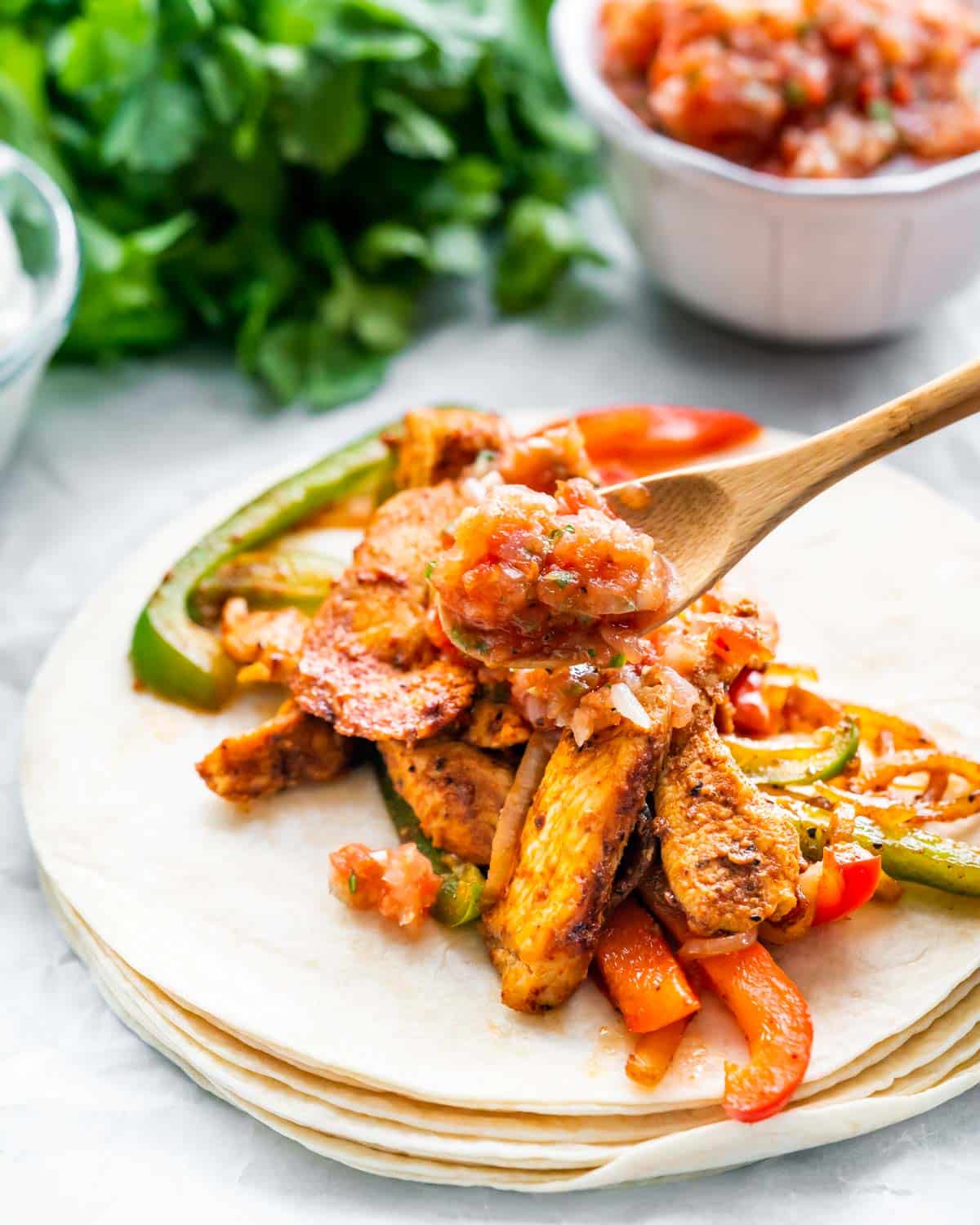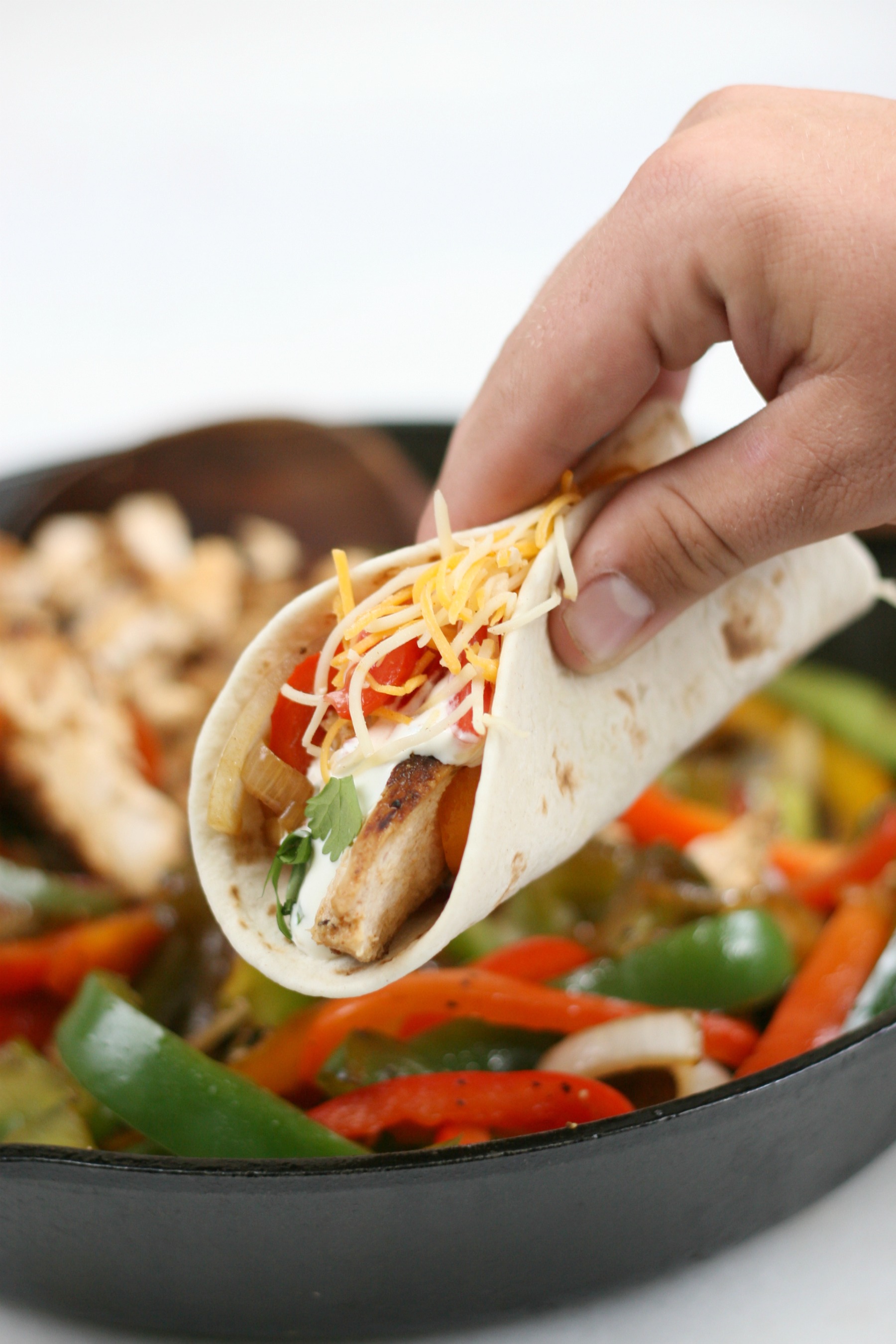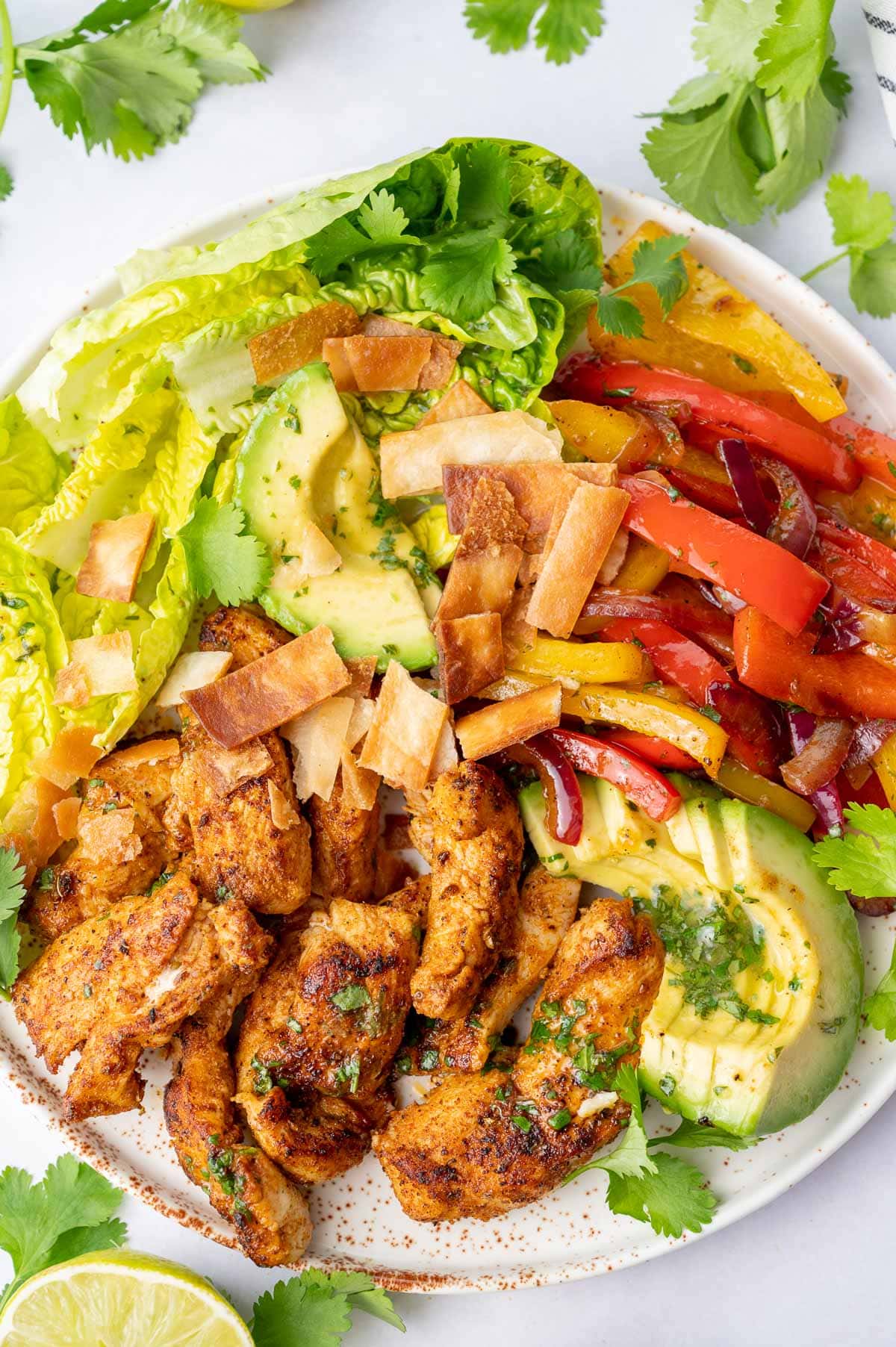Video tentang A Deep Dive into Chicken Fajitas: From Humble Beginnings to Culinary Star
A Deep Dive into Chicken Fajitas: From Humble Beginnings to Culinary Star

Chicken fajitas. The very name conjures images of sizzling peppers, tender chicken, and the vibrant aroma of smoky spices. This seemingly simple dish, a cornerstone of Tex-Mex cuisine, has transcended its origins to become a global favorite, embraced for its versatility, ease of preparation, and undeniable deliciousness. But the story of chicken fajitas is richer and more nuanced than its widespread popularity might suggest. Let’s embark on a culinary journey, exploring the history, techniques, variations, and the enduring appeal of this beloved dish.
A History Steeped in Tradition (and a Little Mystery):
The precise origins of fajitas remain shrouded in some mystery, but the consensus points to the northern Mexican states of Texas and Coahuila during the late 19th and early 20th centuries. Initially, fajitas weren’t necessarily the celebratory meal we know today. They were a practical way to utilize readily available ingredients – primarily skirt steak – that were often considered less desirable cuts. Ranchers and vaqueros (cowboys) would grill these tougher cuts over open fires, resulting in a flavorful, albeit chewy, meal. The term "fajita" itself likely derives from the Spanish word "faja," meaning "belt" or "strip," referring to the long, thin strips of meat used in the dish.
The transition from skirt steak to chicken is a more recent development, likely occurring in the mid-20th century as chicken became more affordable and accessible. This adaptation proved incredibly successful, broadening the appeal of fajitas to a wider audience and paving the way for the countless variations we see today. The shift to chicken also allowed for a quicker cooking time, making it a more convenient meal for busy families and weeknight dinners.
Mastering the Art of Chicken Fajitas: Techniques and Tips:
While the basic concept of chicken fajitas is straightforward, achieving truly exceptional results requires attention to detail and a few key techniques.
1. Choosing the Right Chicken:
The success of your fajitas hinges on the quality of your chicken. Boneless, skinless chicken breasts are the most common choice, offering a lean and tender result. However, using boneless, skinless chicken thighs can add a richer flavor and more moisture, especially if you’re worried about the chicken drying out. Cut the chicken into thin, even strips to ensure even cooking. Avoid overly thick strips, as they may remain tough in the center.
2. The Marinade – A Flavor Foundation:
A well-crafted marinade is crucial for tenderizing the chicken and infusing it with vibrant flavors. A simple marinade might include lime juice, olive oil, chili powder, cumin, garlic powder, and oregano. More adventurous cooks might experiment with chipotle peppers in adobo sauce for a smoky kick, or add a touch of orange zest for brightness. The key is to let the chicken marinate for at least 30 minutes, or preferably longer – overnight is ideal. The longer the marinade sits, the more flavorful and tender the chicken will become.
:max_bytes(150000):strip_icc()/__opt__aboutcom__coeus__resources__content_migration__simply_recipes__uploads__2015__04__chicken-fajitas-horiz-a2-1800-8ca8b1b6a694468b8bccf5a1d8e07c6d.jpg)
3. Sizzling Perfection: The Cooking Process:
While fajitas can be cooked in various ways – from grilling to pan-frying – achieving that signature smoky char and tender texture often requires high heat. A cast-iron skillet or grill pan is ideal for achieving a good sear. Add a little oil to the hot pan, then add the marinated chicken strips. Cook them in batches to avoid overcrowding the pan, ensuring each piece gets a beautiful brown crust. Avoid overcooking, as this will result in dry, tough chicken. The chicken should be cooked through, with an internal temperature of 165°F (74°C).
4. The Veggies: A Colorful Cast:
Bell peppers and onions are the quintessential fajita accompaniments. Slice them into long, thin strips, similar to the chicken. Add them to the pan during the last few minutes of cooking, allowing them to soften and slightly char. Feel free to experiment with other vegetables, such as zucchini, mushrooms, or even asparagus, to add variety and nutrition.
5. Assembling the Masterpiece:

Once the chicken and vegetables are cooked, it’s time to assemble your fajitas. Warm flour or corn tortillas on a griddle or in a dry skillet until pliable. Fill each tortilla with the sizzling chicken and vegetables, adding your favorite toppings such as shredded cheese, sour cream, guacamole, salsa, and pico de gallo.
Beyond the Basics: Exploring Variations and Creative Twists:
The beauty of chicken fajitas lies in their adaptability. While the classic version is undeniably delicious, countless variations exist, catering to diverse palates and preferences.

Spice Levels: Adjust the amount of chili powder, cayenne pepper, or chipotle peppers to control the spiciness. For those who prefer a milder flavor, omit the spicier ingredients altogether.
-
Protein Power-Ups: While chicken is the star, consider adding other proteins, such as shrimp, steak, or chorizo, for a more substantial and flavorful meal.
-
Global Influences: Incorporate global flavors into your fajitas. Experiment with Asian-inspired marinades featuring soy sauce, ginger, and garlic, or add a Mediterranean twist with lemon, oregano, and feta cheese.
-
Vegetarian Delight: Omit the chicken entirely and load your fajitas with an array of roasted vegetables, such as eggplant, sweet potatoes, and butternut squash. Add black beans or chickpeas for extra protein.
-
Fusion Fun: Combine elements from different cuisines to create unique and exciting fajita combinations. Imagine Korean BBQ-inspired fajitas with gochujang marinade, kimchi, and sesame seeds.
Serving Suggestions and Side Dishes:
Chicken fajitas are typically served family-style, allowing everyone to customize their own creations. Consider offering a variety of toppings to cater to different tastes and preferences. Some popular options include:
-
Salsas: From mild tomato salsa to fiery habanero salsa, offer a range of spiciness levels.
-
Guacamole: Homemade or store-bought, guacamole adds a creamy, avocado-rich element.
-
Sour Cream or Mexican Crema: A dollop of sour cream or Mexican crema provides a cooling counterpoint to the spice.
-
Shredded Cheese: Cheddar, Monterey Jack, or a Mexican blend are all excellent choices.
-
Pico de Gallo: A fresh and vibrant salsa made with tomatoes, onions, cilantro, and lime juice.
Conclusion: A Culinary Legacy Continues:
Chicken fajitas have evolved from a humble rancher’s meal to a globally beloved dish, reflecting our desire for flavorful, versatile, and easily adaptable cuisine. Its enduring popularity stems from its inherent simplicity, its ability to be customized to suit individual preferences, and its delightful combination of textures and flavors. Whether you’re a seasoned cook or a kitchen novice, the journey of creating and enjoying chicken fajitas is a delicious adventure waiting to be explored. So gather your ingredients, fire up the stove, and embark on your own fajita fiesta! The sizzling sounds and vibrant aromas will transport you to a culinary paradise, one delicious bite at a time.

Penutup
Therefore, we hope this article has provided valuable insights on A Deep Dive into Chicken Fajitas: From Humble Beginnings to Culinary Star. We appreciate your attention to our article . See you in our next article!

